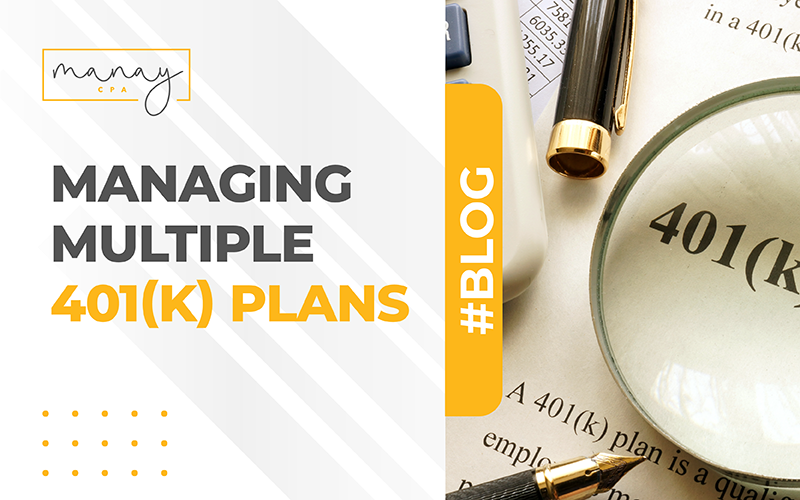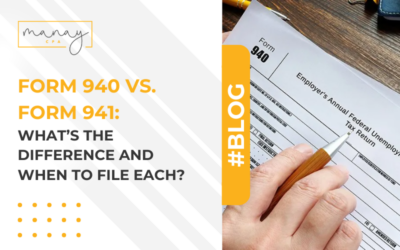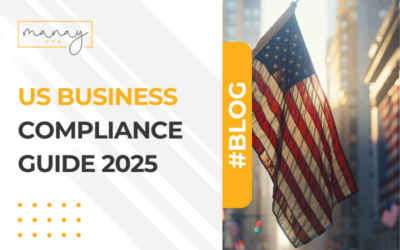Managing Multiple 401(k) Plans

Do you have multiple 401(k) accounts from working at different companies throughout your career? It’s actually quite common! While having multiple accounts can offer more investment options, it can also become a bit of a headache to manage. But don’t worry; we’ve got you covered! In this blog post, we’ll share some tips and strategies to help you manage your multiple 401(k) accounts like a pro. Whether you’re just starting out or already a seasoned retirement saver, there’s something for everyone. So, grab a cup of coffee and let’s dive into the world of managing multiple 401(k) accounts!
Table of Contents
TogglePros and Cons of Multiple 401(k) Plans
Nowadays, it’s becoming increasingly common for people to have more than one source of income. With the gig economy and the need for financial security on the rise, many people are exploring different ways to earn an income. Having multiple income streams can bring many benefits, including greater financial stability, the freedom to pursue your passions, and the chance to retire earlier than planned. But here’s the catch – if you have multiple income streams, you may also end up with multiple 401(k) accounts. And managing them all can be both a blessing and a curse. On the one hand, you have more options for investment and diversification, but on the other hand, it can be quite overwhelming to manage them all.
On the one hand, having multiple plans gives you more options and allows you to diversify your retirement savings across different accounts. This means you can invest in a broader range of assets and potentially increase your overall returns. For example, let’s say you have multiple employer-sponsored 401(k) plans or an individual and employer-sponsored 401(k). There is a limit to how much you can put in as an individual each year; however, your employers can contribute the maximum amount to each of your unrelated 401(k) plans! Just remember to keep track of your individual contributions and make sure they stay within the limit.
Now, let’s talk about the not-so-great side of having multiple 401(k) plans. As with most things in life, there are some downsides to consider. For instance, if you contribute too much to your 401(k) accounts, you may end up facing excess taxes, which is not ideal. Plus, managing multiple accounts can be tricky, and keeping track of all the rules and regulations is essential to avoid any slip-ups. It’s also important to note that the employers contributing to your plans must be unrelated for you to qualify for multiple 401(k)s. So, if you’re planning on setting up multiple accounts, make sure you’re aware of this requirement. And if you withdraw any extra contributions, you may have to pay an early withdrawal penalty, which is never fun. So, it’s crucial to think carefully before contributing too much to your 401(k) plans.
Did you know that in most cases, if you change jobs, you can still keep your old 401(k) and even open a new account? While this may seem like a good option, it comes with its own challenges. Firstly, it’s not uncommon for people to forget about their old retirement accounts, which can happen more easily than you might expect, especially if you forget to update your account’s address. If your plan administrator has outdated contact information, you might end up missing important notices.
Moreover, if the value of your old 401(k) is less than $1,000, your previous employer may issue a payout in your name and send you a check. This could result in an early withdrawal penalty, which is definitely not something you want. That’s why it’s crucial to be aware of these potential issues and understand the rules before making any decisions.
Having multiple 401(k) plans can be a good way to boost your retirement savings and provide you with more flexibility. But, as we’ve discussed, there are potential drawbacks to consider. That’s why it’s essential to weigh the pros and cons carefully and make an informed decision. And if you do decide to go down the route of having multiple accounts, don’t worry; we’ve got you covered with some tips on how to manage them like a pro.

Tips for Managing Multiple 401(k) Plans
Consolidate your 401(k) plans
One of the best things you can do to simplify managing multiple 401(k) plans is to consolidate them. By consolidating your plans, you’ll be able to keep track of your investments more easily, simplify your record-keeping, and even potentially reduce fees. So how do you consolidate your plans? One option is to roll over your old 401(k) accounts into your current plan. However, make sure to inquire with your new employer if they are willing to receive a rollover from your former employer’s plan. Alternatively, you can transfer them to an IRA.
Understand the investment options and fees
Each of your 401(k) plans may have different investment options and fees. Understanding these differences and how they may impact your overall retirement savings is essential. Take the time to review each plan’s investment options and fees and compare them to your overall investment strategy. Consider factors such as asset allocation, risk tolerance, and fees.
Diversify your investments
Diversification is key to managing risk and achieving long-term growth. It’s important to have a mix of investments that span different asset classes, such as stocks, bonds, and real estate. Diversifying your investments can help you reduce the potential risks and increase your chances of achieving your financial objectives. When diversifying your portfolio, consider your overall investment strategy and risk tolerance.
Consider hiring a financial advisor
If you have multiple 401(k) accounts, managing and tracking them can be a complex and time-consuming task. Seeking the assistance of a financial professional can help ease this burden by providing guidance and support in managing and consolidating the accounts. This can be especially helpful for those who have changed jobs frequently and have accumulated multiple accounts over time. Moreover, a financial professional can assist in choosing the best investment options for each 401(k) account, considering the individual’s financial goals, risk tolerance, and time horizon. This can help ensure that the investments are properly diversified and aligned with the individual’s retirement objectives.
In conclusion, managing multiple 401(k) plans can seem daunting, but with the right approach, it can be simplified. Consolidating your plans, understanding investment options and fees, and diversifying your investments are all essential steps to successfully managing your retirement savings. But if all of this seems overwhelming, remember that you don’t have to do it alone. Seeking the help of a financial professional can provide guidance and support in managing and consolidating your accounts, as well as selecting the best options to achieve your retirement objectives. By taking these steps and regularly reviewing and adjusting your investment strategy, you’ll be on your way to a comfortable retirement. And it’s never too early or too late to start planning for your future!

Published on: 24 March 2023
Last updated on: 11 September 2023
Manay CPA is a reputable, full-service CPA firm based in Atlanta, Georgia. Founded in 2001, we provide comprehensive accounting and tax solutions to individuals and businesses across all 50 states.





